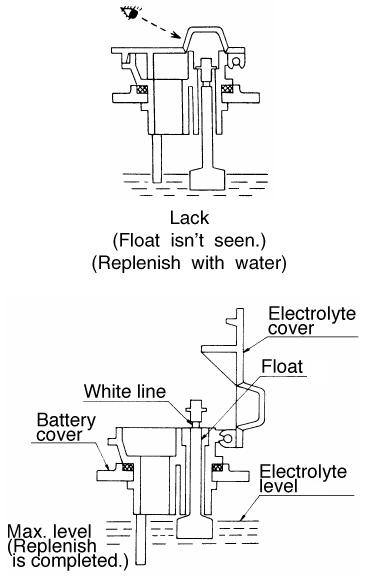
3 minute read
Fuse (main) Loose, volume
Disposing of lubricants, filters and batteries
•Used parts and lubricants which arise during repair work must be stored safely until they can be disposed of in accordance with the regulations..
•In this respect, follow the regulations applicable in your country.
Group PS, Periodic Service
Clean the lift chains
•Never clean the lifting chains with a steam cleaner.
Clean the chains with a self-lubricating cleaner (e.g. diesel).
Lubricate the lift chains
•The lift chains are subjected to heavy loading and therefore can only attain their maximum life if they are oiled regularly and adequately. Oiling the lift chains is therefore an important part of the maintenance work.
You can carry out this work quickly and correctly with chain lube, see lubricant recommendations.
•Clean and lubricate the upright inside rails, rollers and side shifter (if fitted).
Use only suitable lubricants in accordance with the recommended lubricants list.
For add-on equipment the service instructions of the manufacturer, see separate operating manual, must be observed.
Check the lift chain adjustment
•Lift the rated load of the forklift on the forks. Bring the upright to the vertical and lower the fork carrier completely. The underside of the forks at the heel must be 10 mm above the floor.
NOTE
It is important to use a load equal to the rated capacity of the forklift when checking the lift chains, since any expansion of the chains is then allowed for.
Adjust the lift chains
•The lift chains are adjusted at the chain anchors. For this, the locknuts must be undone and, depending on the required setting, the top nut screwed up or down.
After the adjustment has been made, the lock-nuts must be tightened up again
CAUTION
If the lift chains stretch by more than 2% or 3% of their original length, they must be replaced for safety reasons. Observe the statutory regulations of your country. You can contact your CLARK dealer with confidence for this.
Measures for longer lay-off periods, storage ( > 6 months)
• The following measures must be carried out: Clean the fork lift truck and grease the piston rods. Remove the battery. Jack up the fork lift truck to prevent the tyres going flat. All lubricants must be replaced before recommissioning. Be sure to recharge a battery regularly(2 times/a month)
SM 776 The Planned Maintenance Program • PS-2-6
Group PS, Periodic Service
General Cautions For Inspection And Maintenance
WARNING
When inspecting or maintaining, make sure to disconnect the battery plug.
If the inspecting and maintenance is surely carried out, an accident can be prevented and the life of machine becomes long. Even if you are busy, fix the date and carry out the periodic inspection so as to increase the working ratio of machine and to reduce the maintenance cost of machine. Also, the hour written in the inspection item is based on 8hours of a day and 200hours of a month. At actual inspecting, make out the schedule in the unit of day and date, etc. Before starting operation, check the periodic inspection schedule, and when that inspection time comes to, check the checking points. •Use the genuine part of our company to replace a part. •Use the recommended oil, especially hydraulic oil, must be the recommended domestic supply oil. •To supply oil, clean up the grease on the oiling inlet with brush or cloth at first. •To supply or drain oil and to check the oil level, stop the machine on an even ground and carry out. •To inspect the electric system, disconnect the battery plug and carry out.
Inspection Every Week (50HR)
Inspecting electrolyte For inspecting the level of electrolyte, check the condition of battery and float from outside. If the float lowers down, fill up the electrolyte immediately. To fill up the distilled water, open the cover completely. When the float goes up and the white line is to be seen, stop filling up the distilled water. After filling up, close the electrolyte cover completely. Be careful when filling up the electrolyte because if the electrolyte is excessively filled up, it can overflow.

Measuring Specific Gravity
Measure the specific gravity and temperature of all cells. If the specific gravity converted into 20°C is almost the same with the specific gravity of whole cell, it is good. If there is a cell whose specific gravity is 0.05 or lower than the average value, it is abnormal. At this time, make contact your local dealer.




